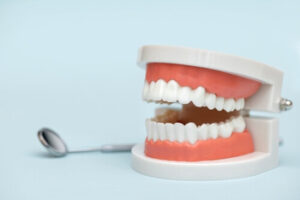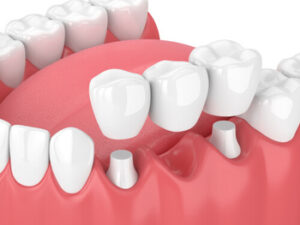Replacing missing teeth is about much more than appearance; it is essential for maintaining healthy function and confidence in everyday life. Dental bridges offer a trusted, lasting solution for closing gaps and protecting your overall oral health. With several options available, selecting the right one can make all the difference in comfort and longevity. Understanding the differences between dental bridge types allows you to make informed decisions and find a solution that blends naturally with your smile. This guide will walk you through the most popular options, the steps involved, and the important benefits you can expect.
What Are Dental Bridges?
Dental bridges are fixed dental prosthetics designed to replace one or more missing teeth by attaching artificial teeth to nearby natural teeth or implants. They fill the space where a tooth once was, restoring both function and appearance. Depending on your needs, different types of bridges may be recommended to achieve the desired result.
Which Type Of Dental Bridge Is Right For Your Smile?
Choosing the correct type of dental bridge ensures long-lasting function, comfort, and natural aesthetics. Each option is uniquely designed to suit specific dental needs and situations. Here is a closer look at the main dental bridge types.
 Traditional Dental Bridges: A Reliable Choice
Traditional Dental Bridges: A Reliable Choice
Traditional dental bridges are among the most widely used options for replacing missing teeth. They rely on dental crowns placed over healthy abutment teeth on either side of the gap. A pontic tooth, or filler tooth, is suspended between the crowns to create a complete restoration. This type is ideal when there are strong natural teeth adjacent to the space. Traditional bridges deliver reliable results and are known for their natural look and sturdy feel.
Cantilever Dental Bridges: Perfect For Specific Cases
Cantilever bridges are chosen when there is only one adjacent tooth available next to the missing space. Unlike traditional options, a cantilever bridge attaches to just one abutment tooth. This design is helpful when replacing a front tooth, but is usually avoided in areas where strong biting forces are involved. Cantilever bridges provide a solution when healthy adjacent teeth are limited. Your dentist will determine whether this style fits your unique needs.
Maryland Bridges: A Conservative Approach
Maryland bridges, also known as resin-bonded bridges, are more conservative than traditional options. Instead of placing crowns on adjacent teeth, a Maryland bridge uses metal or porcelain wings bonded to the back of adjacent natural teeth. This method minimises alteration to healthy teeth and is often used for front teeth. Although they offer a conservative solution, Maryland bridges may not be suitable for areas under heavy chewing pressure. They work optimally where aesthetics and minimal tooth preparation are priorities.
Implant-Supported Bridges: A Strong, Permanent Option
Implant-supported bridges are designed for those who need to restore multiple missing teeth with minimal impact on existing teeth. Implants fuse with the jawbone, forming a sturdy base for the bridge to sit on securely. This solution promotes long-term oral health while offering outstanding durability. Implant-supported bridges are highly durable, preserve bone structure, and prevent shifting of existing teeth. While the procedure takes longer, the results are highly functional and long-lasting. This type is perfect when strong abutment teeth are not available or when several teeth are missing.
Dental Bridge Procedure: What To Expect At Each Step
Knowing what the dental bridge procedure involves can ease any concerns and help you feel more confident throughout the process. Here’s what to expect during dental bridge treatment.
Initial Consultation And Planning
The first step is a thorough examination at the dentist’s office. Your dental professional will review your oral health, evaluate the condition of surrounding teeth, and recommend the most appropriate type of dental bridge. X-rays or digital impressions may be taken to guide the treatment plan. Discussions about materials, costs, and care expectations happen at this stage. A personalised plan is then developed to achieve optimal results.
Preparing The Abutment Teeth
If you are receiving a conventional or cantilever bridge, the neighbouring teeth need to be prepared. A small portion of enamel is carefully removed to allow the dental crowns to fit securely. This ensures a natural-looking, seamless finish when the bridge is placed. To shield the prepared area, a temporary crown may be used while your final bridge is custom-built. Protecting the teeth during this stage helps achieve a comfortable, natural-looking fit later on.
Taking Impressions For Your Custom Bridge
Precise impressions are taken of the prepared area and surrounding structures. These impressions are forwarded to a dental lab where experienced dental technicians create your new dental bridge. The lab may use traditional methods or advanced digital technology to ensure precision. While your custom bridge is being made, a temporary dental bridge is installed to protect the prepared tooth and maintain function. Proper impressions contribute significantly to a comfortable final result.
Fitting Your New Dental Bridge
Once your permanent bridge is ready, you will return to have it fitted. Your dentist checks the fit, colour match, and bite alignment carefully before cementing it into place. Minor adjustments are made as needed to ensure optimal comfort and function. The bridge is securely bonded using strong dental cement. You will leave this appointment with your new dental bridge fully functional and looking like a natural part of your smile.
Follow-Up Care And Adjustments
A follow-up appointment is generally scheduled to ensure the new bridge is functioning as expected. Your dentist checks for comfort, fit, and any signs of irritation to surrounding gums. Early detection of any minor issues allows quick adjustments. Good communication with your dentist during this period supports long-term success. Regular dental visits help monitor the bridge’s performance and protect your overall oral health.
What Lasting Benefits Can You Expect From A Dental Bridge?
Dental bridges do much more than just replace missing teeth. They offer multiple benefits that support both aesthetics and function.
Restoring Natural Chewing Function
One of the main goals of dental bridges is to restore your ability to chew properly. When teeth are missing, everyday tasks like eating often become more challenging and less enjoyable. A well-fitted dental bridge ensures you can enjoy a full range of foods without restrictions. Proper chewing supports digestion and nutritional health. Returning to normal eating habits enhances quality of life.
Preventing Shifting Of Surrounding Teeth

Supporting Jawbone And Gum Health
Although dental bridges do not stimulate the bone like dental implants, they still help maintain gum health. Filling gaps prevents food and debris from collecting in spaces, reducing the risk of gum disease. Healthy gums are critical for supporting surrounding teeth and existing restorations. Careful design and fit help prevent irritation and promote good tissue health. Regular cleaning habits complete the picture.
Improving Speech Clarity
Missing teeth, particularly in the front of the mouth, can affect your speech. Dental bridges restore proper pronunciation by filling the space where teeth once stood. Clear speech supports self-confidence in both professional and social situations. Replacing teeth quickly after loss helps minimise speech changes. A strong voice is one more reason to seek timely tooth replacement.
Enhancing Facial Appearance
Missing teeth can cause changes to facial contours over time. Dental bridges support lips and cheeks, maintaining the natural structure of the face. Replacing lost teeth helps prevent a sunken or aged appearance. A complete smile not only restores function but also boosts self-esteem. Feeling good about your smile reflects positively in every aspect of life.
How To Keep Your Dental Bridge Strong And Healthy Over Time?
Proper care is essential to increase the life of your dental bridge and protect your investment. Simple daily habits and regular professional care make a big difference.
Maintaining Good Dental Hygiene Every Day
Brushing twice a day and flossing every day around the bridge are crucial habits. Pay close attention to the gum line, where food particles can collect. Using fluoride toothpaste helps strengthen surrounding teeth. Mouthwash can also help control bacteria. Good habits create a strong foundation for long-term success.
Choosing Foods That Are Kind To Your Bridge
Avoiding very hard foods like ice or sticky lollies protects your bridge from damage. Softer, nutritious foods support both oral health and overall wellness. Gentle choices help preserve the integrity of the bridge and adjacent teeth. Being mindful at meal times goes a long way. Smart eating supports a smart investment.
Protecting Your Bridge During Sleep
If you grind your teeth, a custom night guard can prevent unnecessary wear on your bridge. Grinding creates pressure that may crack porcelain-fused restorations. A properly fitted guard cushions teeth during sleep. It also protects natural enamel from excessive forces. Discussing night-time protection with your dentist is always wise.
Prioritising Regular Dental check-ups

Acting Quickly If Problems Arise
If you experience discomfort, mobility, or sensitivity around your bridge, do not wait to seek help. Early attention preserves the bridge and prevents further damage. Delaying care may lead to more complex or costly treatments. Your dental team is your partner in maintaining good dental hygiene and strong dental restorations. Taking action quickly is key.
Book Your Consultation And Discover Your Ideal Dental Bridge
Understanding what dental bridge types are available helps you make informed decisions about your oral health and smile restoration. Whether you need a traditional bridge, a cantilever solution, a Maryland design, or implant supported bridges, the right choice brings lasting comfort, confidence, and protection. Planning your procedure, caring for your bridge properly, and working with an experienced dentist all contribute to outstanding results. If you would like to explore your options for restoring your smile, call us today on 02 9051 0600 to book your consultation and start your journey toward better dental health.
References
https://www.healthdirect.gov.au/dental-bridge
https://www.healthline.com/health/dental-bridge


 Traditional Dental Bridges: A Reliable Choice
Traditional Dental Bridges: A Reliable Choice



